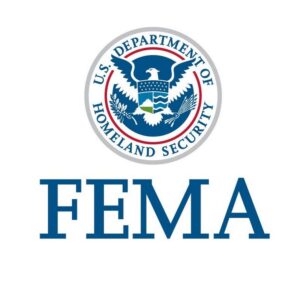
The Federal Emergency Management Agency (FEMA) plays a critical role in the United States’ disaster management framework. Established in 1979, FEMA is tasked with coordinating the federal government’s response to natural disasters, terrorism, and other emergencies. Over the decades, the agency has evolved, adapting to the increasing complexity and frequency of disasters, and has become a pivotal force in disaster preparedness, response, recovery, and mitigation efforts.
History and Evolution
was created in response to a growing need for a unified approach to disaster management. Before its establishment, disaster response was handled by various federal agencies, leading to inefficiencies and fragmentation in efforts. The agency consolidated these efforts, providing a centralized command structure for disaster response.
In the 1980s, FEMA faced criticism for its handling of several disasters, particularly the 1989 Loma Prieta earthquake. This led to reforms aimed at improving response capabilities and enhancing the agency’s operational readiness. In subsequent years, the agency focused on developing comprehensive disaster preparedness and response strategies, often in collaboration with state and local governments, non-profit organizations, and the private sector.
Core Responsibilities
FEMA’s primary mission is to help people before, during, and after disasters. Its core responsibilities can be categorized into several key areas:
- Preparedness: FEMA emphasizes the importance of readiness at all levels. The agency conducts training programs, exercises, and public education campaigns to ensure communities are prepared for various emergencies. Initiatives like the National Preparedness Month aim to engage citizens in disaster preparedness.
- Response: When disasters occur, FEMA coordinates the federal government’s response efforts. This includes deploying resources, personnel, and equipment to assist affected states and communities. works closely with local emergency management agencies to ensure a swift and efficient response.
- Recovery: After a disaster, FEMA assists individuals and communities in recovering. This includes providing financial assistance for temporary housing, home repairs, and other disaster-related expenses. FEMA also supports long-term recovery efforts through programs aimed at rebuilding infrastructure and restoring public services.
- Mitigation: FEMA focuses on reducing the impact of future disasters through risk assessment, planning, and investment in resilient infrastructure. The agency administers grants for projects that enhance community resilience, such as flood control systems and earthquake retrofitting.
Major Programs and Initiatives
FEMA operates several programs designed to enhance disaster response and recovery:
- Public Assistance Program: This program provides federal assistance to state and local governments and certain private non-profits for emergency work and the repair or replacement of damaged infrastructure.
- Individual Assistance Program: This program offers financial assistance to individuals and households affected by disasters, helping them cover temporary housing, home repairs, and other critical needs.
- Hazard Mitigation Grant Program: Through this program, FEMA provides funding for projects that reduce disaster risk, such as reinforcing buildings and developing early warning systems.
- National Flood Insurance Program (NFIP): Administered by FEMA, the NFIP offers flood insurance to property owners, renters, and businesses, promoting floodplain management and reducing the financial burden on federal disaster relief.
Challenges and Criticism
Despite its critical role, FEMA has faced challenges and criticism over the years. Major disasters, such as Hurricane Katrina in 2005, highlighted shortcomings in the agency’s preparedness and response capabilities. The slow response and inadequate support for affected communities raised questions about the effectiveness of federal disaster management.
In recent years, FEMA has also faced challenges related to climate change and the increasing frequency of natural disasters. As hurricanes, wildfires, and floods become more severe, the agency must adapt its strategies to address evolving threats. Additionally, the COVID-19 pandemic presented unique challenges, requiring to expand its focus beyond natural disasters to include public health emergencies.
The Role of Community Engagement
FEMA recognizes that effective disaster management relies heavily on community involvement. The agency actively promotes community engagement through initiatives such as Community Rating System (CRS), which incentivizes local governments to implement floodplain management practices that exceed the minimum standards. By fostering collaboration among local organizations, citizens, and government agencies, FEMA enhances preparedness and resilience at the community level.
Conclusion
The Federal Emergency Management Agency plays an indispensable role in safeguarding the nation against disasters. Through its comprehensive approach to preparedness, response, recovery, and mitigation, FEMA has evolved into a vital resource for individuals, communities, and governments. While challenges remain, the agency’s commitment to enhancing resilience and promoting effective disaster management continues to grow.
As climate change and other factors contribute to an increasing number of disasters, FEMA’s mission will become even more critical. By prioritizing preparedness and community engagement, the agency aims to ensure that the nation is ready to face future challenges, fostering a culture of resilience and safety for all. Through its ongoing efforts, FEMA not only responds to disasters but also empowers communities to thrive in the face of adversity.
